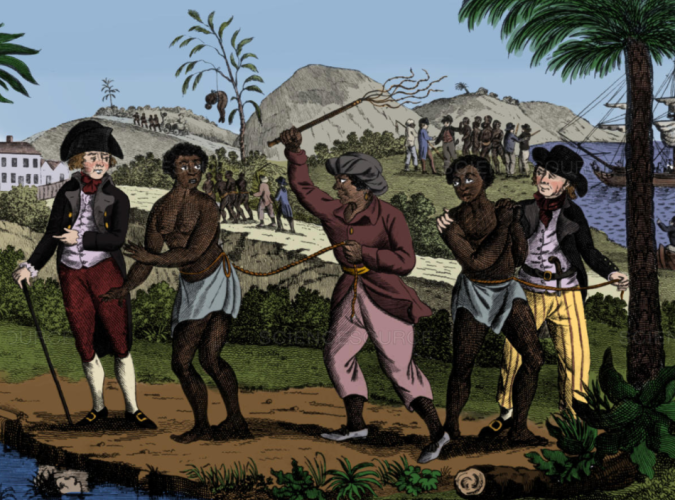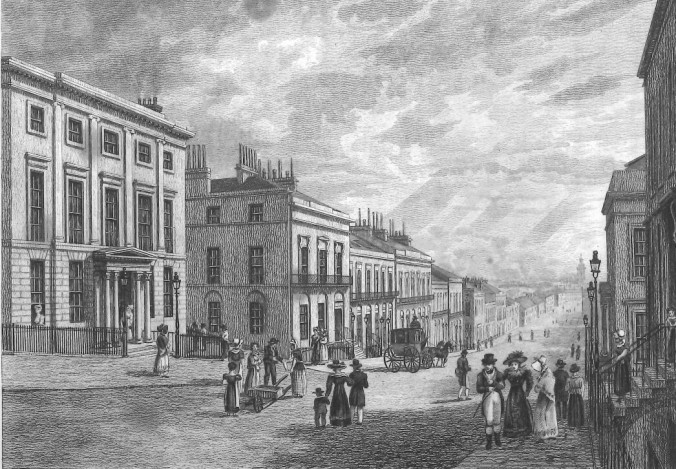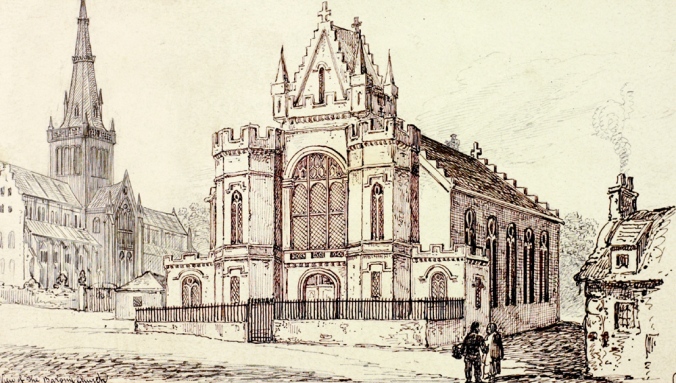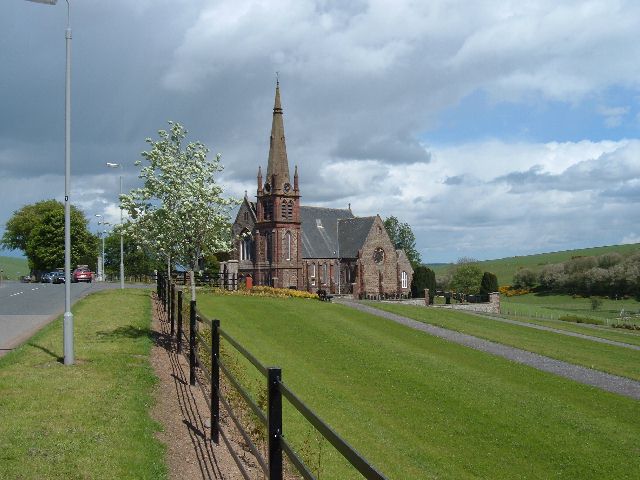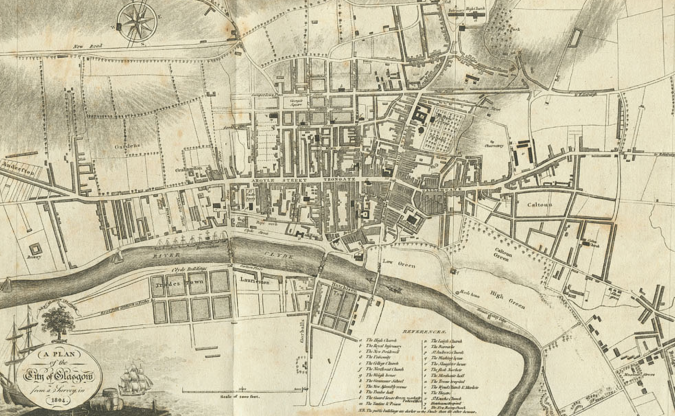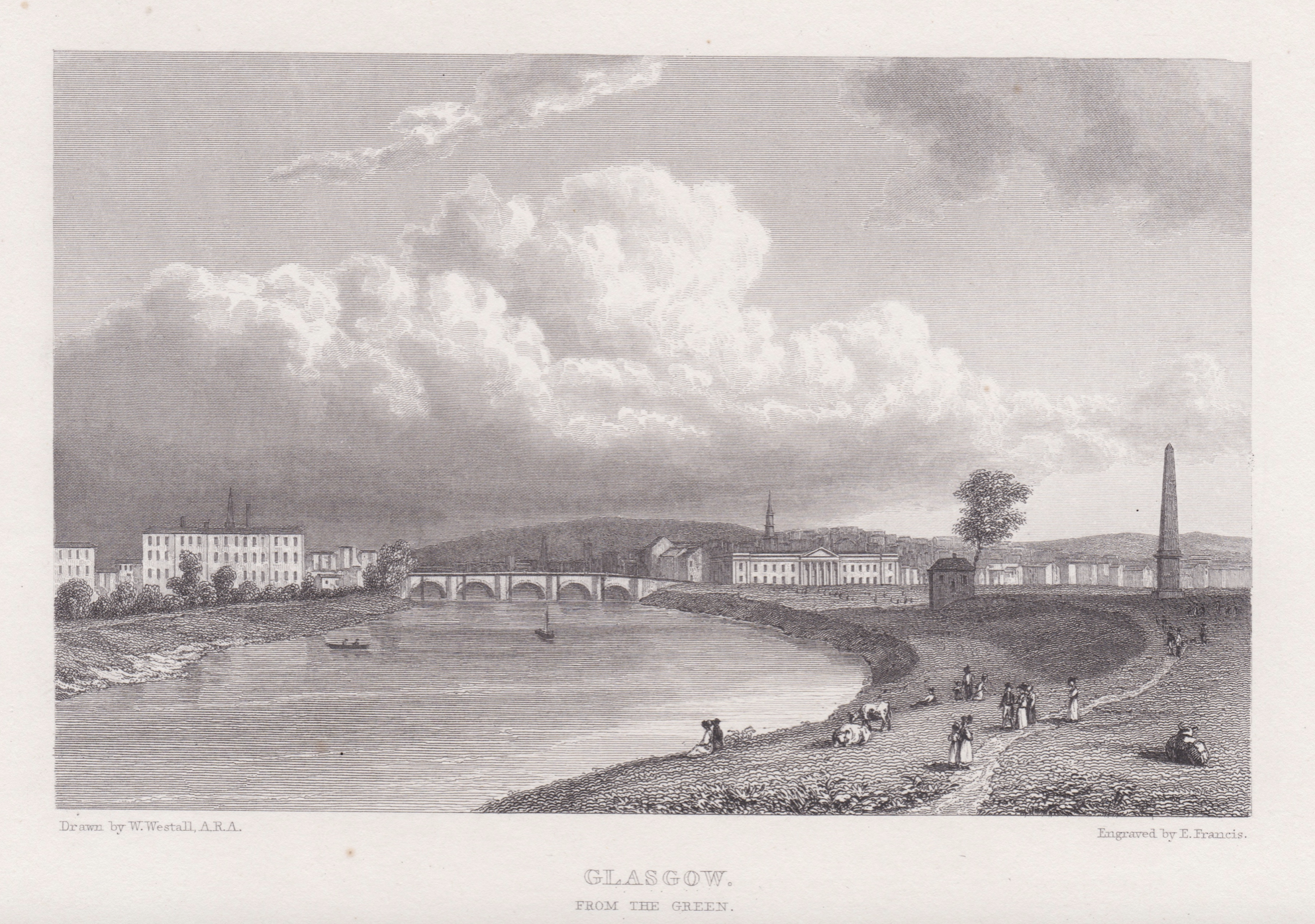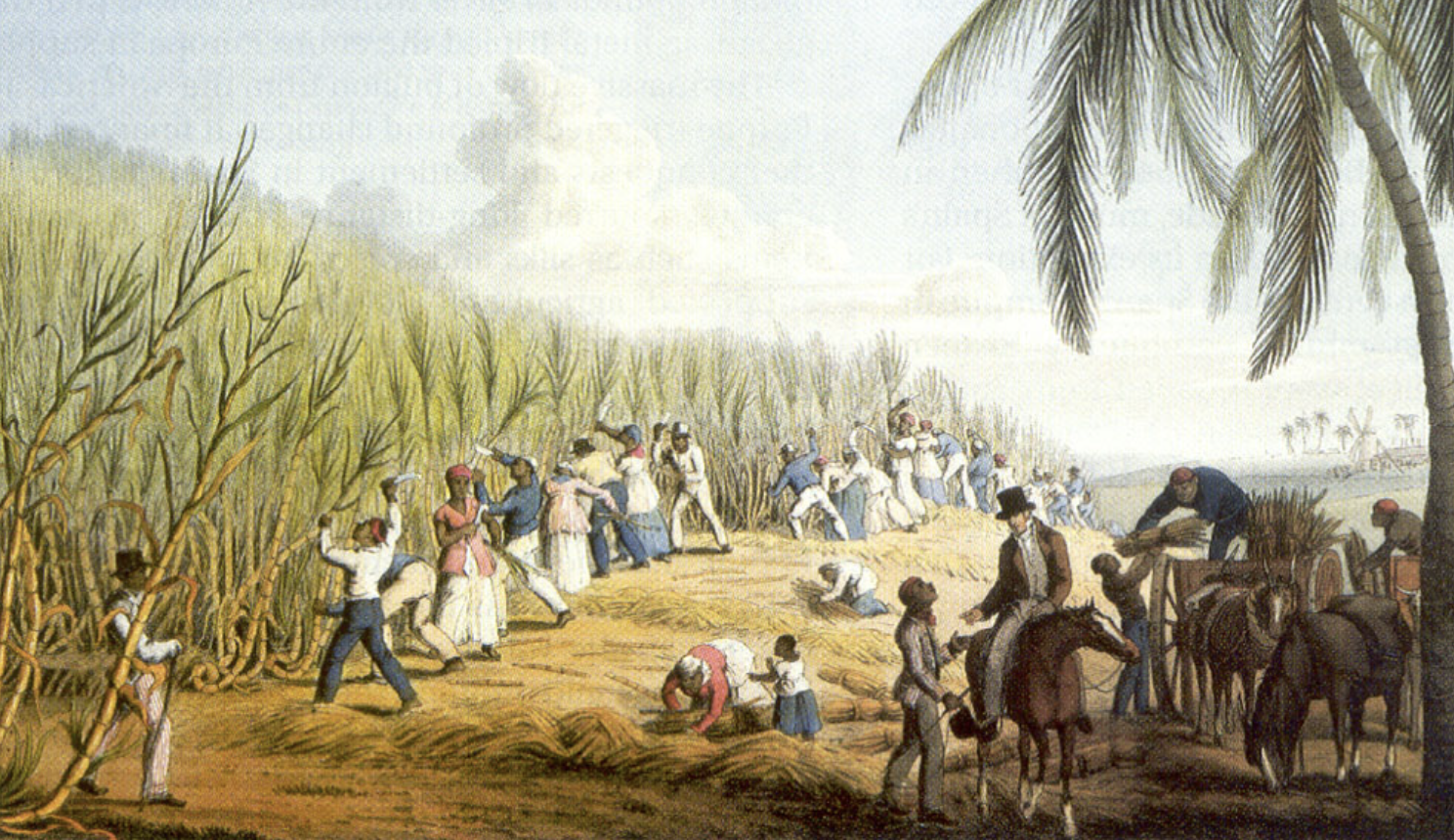In the last post, I summarised what I’ve been able to find out about my 4th great uncle George Robb, a Glasgow merchant who died some time between 1810 and 1813. When George died, his widow Penelope Robb, née Thomson, would have been no more than thirty-six years old, with four small children: in 1813, George junior was seven years old, Elizabeth five, John four and Jean three. It’s understandable that Penelope might have been keen to marry again.
The Glasgow parish records note that, on 27th June 1813, ‘John Young Receiver General in Jamaica and Penelope Thomson l[awful] d[aughter] of John Thomson saddler in Glasgow, [were] married by Mr Archibald Wilson Minister of Cardross.’ As noted in an earlier post, Rev Wilson was almost certainly related to Penelope by marriage, since his wife Margaret McLachlan was probably a relative of Penelope’s late mother.
We know from later records that Penelope’s second husband John Young was born in about 1772, so he would have been about forty-one years old when they married. It seems likely that he was a widower, but I’ve yet to find any evidence of a previous marriage. What else do we know about him? In his will of 1827, John Young would mention ‘my cousins John Mitchell Esquire of the City of London, William Mitchell Esquire of the City of London merchant [and] Rowland Mitchell Esquire of the said city merchant’. These three men are nominated, together with Samuel Mitchell, and with John’s widow Penelope, as the executors of the will.
Thanks to information from Malcolm Sandlands, another researcher exploring family connections between Scotland and colonial Jamaica, I’ve learned that Mitchell was the maiden name of John Young’s mother. Janet Mitchell married John Young senior in Glasgow on 19th May 1767. Born in Kilmadock, Perthshire, Janet was the daughter of John Mitchell of Doune (1712 – 1783) and his wife Margaret Ferguson (1723 – 1774). They had at least seven children besides Janet, including William (1742), David (1744), Marjory (1747), Christian (1749), James (1752), Margaret (1757) and John.

Sugar plantation, Jamaica, from a watercolour by John Henry Schroeter, c. 1800
A number of these children would have close associations with Jamaica. The eldest son, William, was perhaps the most prominent. According to the Legacies of British Slave-Ownership website:
William Mitchell …married Catherine Hamilton and they had one daughter. William ‘King’ Mitchell (as he was known on the island) resided in Jamaica for nearly forty years. He was both a plantation owner and an attorney who in his own estimate had ‘perhaps 16 or 18’ sugar plantations under his ‘care’ at various times. He informed a committee in 1807 that he had spent over £30,000 on the erection of a sugar works on one of his own estates which included Windsor Park in St. Catherine, Bushy Park in St. Dorothy, New Hall in St. Thomas in the Vale and Georges Valley in Trelawny. Among others Mitchell did business with and borrowed money from the powerful Jamaica planter Simon Taylor.
Mitchell was returned as an M.P. for Plympton on the Treby interest at the general election of 1796. He was an active member of the Society of West India Planters and Merchants and gave evidence before Parliament’s West India Committee in 1807. He returned to Jamaica in 1798, likely due to the death of his brother James. Although nominally held by Charles Germain, 2nd Viscount Sackville from 1776 to 1815, in real terms James had held the lease on the office of the Receiver-General, a post which brought in commission worth £6,000 per annum average. Mitchell took a place in the Jamaica Assembly in 1798 and managed to stave off a bill which would have replaced the commission system with a fixed salary. William then succeeded as the lessee of the office of Receiver-General and in 1808 he renewed the lease for a further 19 years from Sackville’s younger brother George Germain, although it appears he appointed a deputy to this position. Mitchell’s political influence in Jamaica was strong and he was instrumental in securing the position of Agent for Jamaica for his nephew Edmund Lyon.
During her residence in Jamaica Lady Nugent, the Governor’s wife, met William Mitchell. She described him in her journal noting that ‘Mr. M’s delight is to stuff his guests, and I should think it would be quite a triumph to him to hear of a fever or apoplexy, in consequence of his good cheer. He is immensely rich, and told me he paid £30,000 per annum for duties to Government… He seems particularly indulgent to his negroes, and is, I believe, although a very vulgar, yet a very humane man.’ This description gives an indication of the lifestyle of a wealthy Jamaica planter – the importance of sociability, generosity and a reputation for benevolence.
As a member of the House of Assembly Mitchell had to apply for leave before returning to England, which he did in 1805. Although it had been expected he would only remain a year he was still resident in London in 1808 when he gave evidence to a committee of inquiry on the distillation of sugar. He resided at Upper Harley Street in Marylebone and was well known for the extravagant social gatherings he arranged for the absentee Jamaicans in London. It is not clear if he ever returned to Jamaica.
Mitchell died at Brighton in 1823 having made a will in 1819 which bequeathed all his Jamaican estates and his property in Scotland to his nephew John Mitchell. He also left over £25,000 in annuities and legacies for his wife and other relatives.
Further information on William ‘King’ Mitchell can be found at the History of Parliament Online website. William’s younger brother James, who is mentioned in the above account, served as Receiver-General in Jamaica: there are references to him holding this office in 1796. He died in Spanish Town in 1806.
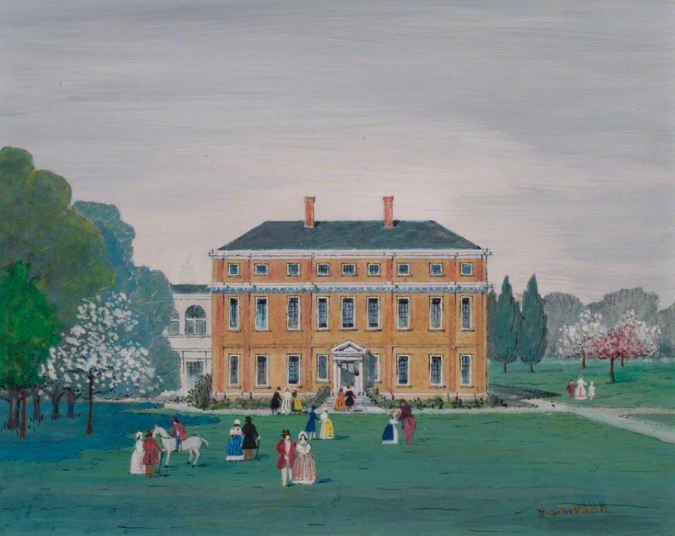
‘Carshalton House, Surrey’, by Thomas John R. Winn (1896 – 1990), Sutton Central Library, via artuk.org
Another brother, David Mitchell, married Anne Hewitt Smith. They lived initially in Jamaica, and later at Carshalton House in Surrey. Four of their sons – John, William, Rowland and Samuel – were left bequests in the will of their uncle William Mitchell on his death in 1823. Presumably these are the cousins referred to in the will of John Young.
William Mitchell’s will also maintains that, according to the terms of the will of his late brother James, he and his heirs and executors are entitled to ‘hold, exercise and enjoy the Office of Receiver General of His Majesty’s Island of Jamaica and to receive all the benefits emoluments and advantages which have arisen or may arise therefrom for the term of nineteen years from the seventeenth day of October one thousand eight hundred and eight’.
Of the four Mitchell cousins mentioned in John Young’s will, I’ve managed to find out most about Rowland. He married Anne Heath, probably in about 1810. They had three children that I know of: Mary Ann (1811), John (1813) and Ellen Kate (1815). The two daughters married into the aristocracy. Mary Ann married Swiss Baron Charles Alexander de Steiger and they had three children: Anna Maria Charlotte (1833), Rowland (1836) and Albert Alexander (1837), before Baron de Steiger’s death, which occurred before 1841. Ellen Kate married the Hon Frederick Thomas Pelham, later a Rear Admiral in the Navy, and the son of Thomas Pelham, Earl of Chichester.
The Receiver-General was the public official responsible for receiving and disbursing Government money in colonial Jamaica. It’s unclear when John Young held the post – though if the parish records are to believed, he was in post at the time of his marriage to Penelope – and his name does not feature on the (admittedly incomplete) list of post holders available online. However, it would seem that, whenever he held it, his position was the direct result of his family connections.
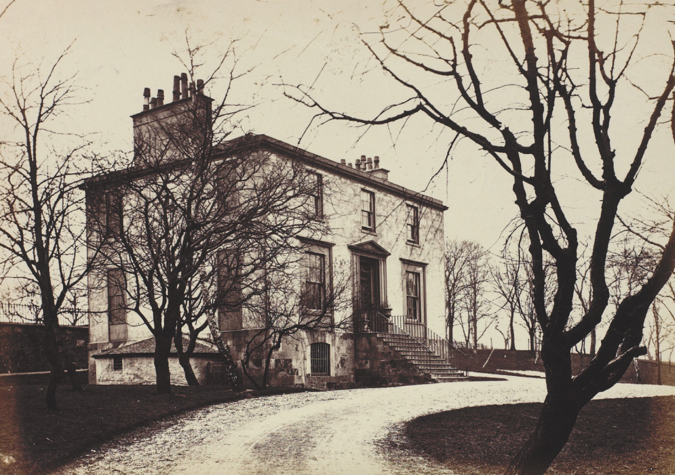
Meadow Park House, Glasgow (Glasgow University Library, Special Collections, via theglasgowsstory.com)
Following their marriage, John and Penelope young lived at Meadow Park House, which one source describes as follows:
The lands of Meadow Park lie on the north side of Eastern Duke Street, at Drygate Toll Bar, and stretch also along the west side of the road to Cumbernauld and Stirling. Anciently they formed part of ‘Easter Craigs,’ but were subsequently included under the comparatively modern name of Whitehill. One of the fields was known as ‘Meadow Park,’ and when the house […] was erected, it received this appellation.
The property was purchased in 1804 from Mr. Grahame of Whitehill, by Mr. James Carrick, merchant in Glasgow, who shortly afterwards built Meadow Park House. About eight acres of land were included in the purchase, and the whole enclosed around the mansion. There was a large walled garden behind, with gateway and lodge at the highway.
According to the same source, James Carrick resided at the property until his death in 1814 – a year after John Young’s marriage to Penelope Thomson. The sources goes on:
In May following it was sold by his three sons, James, Alexander, and Robert Carrick, merchants in Glasgow, to James Young, a retired West India merchant. He died there in 1827.
Since we know that John Young was living at Meadow Park from 1816 at the latest, and that he died there in 1827, this must either be a mistake, or else the names ‘John’ and ‘James’ were interchangeable. Certainly the occupation of West India merchant would seem to be a fitting accompaniment for John’s colonial office as Receiver-General. John Young is listed in Pigot’s New Commercial Directory of Scotland for 1825-6, which gives his address as Meadow Park, and places him in the ‘list of nobility, gentry and clergy’.

Meadow Park can be seen at the extreme right of this section of Cleland and Smith’s 1832 ‘Map of the ten parishes within the Royalty…of Glasgow’ (via National Library of Scotland Map Images)
John Young and Penelope Thomson would have three children of their own. Penelope Young was born in about 1815. Janet Young was born on 14 December 1816 and baptised on 23 January 1817. The witnesses were the Rev. Archibald Wilson (see above) and John Thomson, though it’s unclear whether this was Penelope’s father, her brother, or her cousin, all of whom shared that name. A third child, John Young junior, was born on 15 December 1819. The witnesses were Penelope’s half-brother Henry and a William Meiklejohn, who may or may not have some connection with the William Meikleham who turns up later in the family’s story.
John Young senior died on 16th January 1827, at the age of 55, at Meadow Park. The executors of his estate were ‘Mrs Penelope Thomson or Young his widow’ and his London-based Mitchell cousins. The total value of his assets was £175 2s. 11d.
Footnote
John Young signed and sealed his last will and testament at his home at Meadow Park, Glasgow, on 15th January 1827, the day before his death. The will closes with the following statement:
In witness whereof these presents written upon stamped paper by David Craig Clark to Archibald Grahame and Thomas Struthers Writers in Glasgow are subscribed by me at Meadow Park the fifteenth day of January 1827 years before these witnesses Hugh Smith Merchant in Glasgow the said Archibald Grahame Writer there and the said David Craig and George Robb Apprentice to the said Archibald Grahame (sigd) John Young Hugh Smith witness Archd. Grahame witness Dav. Craig witness George Robb witness.
I’m fairly certain that the George Robb who was one of the witnesses to John Young’s will was his stepson, the product of his wife Penelope’s first marriage to my ancestor, George Robb senior. George junior would have been twenty or twenty-one years old in 1827. We know from the record of the legal dispute concerning the will of his aunt Elizabeth Thomson, that George was working as a (law) writer in 1836.
When I first read John Young’s will, I wondered whether the reference to Archibald Grahame, the writer, or solicitor, to whom George Robb was apprenticed, was an error, and that the person meant was Archibald Graham Lang who, as we shall see in a future post, would become George Robb’s brother-in-law three years later in 1830, when he married his sister Jean. However, I soon concluded that Lang was probably too young – he was probably about twenty-five years old at this date – to have had an apprentice. Moreover, we know that Lang was a merchant, not as a lawyer.
However, the similarity in names prompted me to search further, and I discovered that Archibald Grahame was a prominent lawyer in Glasgow, working with Thomas Struthers, until their partnership was dissolved in May 1827, just a few months after John Young’s will was signed and sealed, ‘the term on the contract having expired’. It seems that Grahame then relocated to England, where he secured an appointment as a parliamentary solicitor in Westminster. One source refers to him as ‘the talented Parliamentary solicitor in London.’ Graham’s name is attached to a number of cases decided by the House of Lords in the 1830s and 1840s.
This made me sit up and take notice, since I recalled that John Robb, one of the sons of my 3rd great grandfather Charles Robb (the brother of George Robb senior), was employed at one stage as a ‘parliamentary agent’ or clerk, indicating that he too worked for a law firm attached to Parliament. Could it be that John worked for Archibald Grahame, or that he acquired his post through the influence of Grahame, who had once been the employer of John’s cousin George Robb junior in Glasgow? If so, this might be further proof of the connection between my direct ancestors and the Glasgow Robbs, and also suggest that the two branches of the family remained in contact after Charles moved with his family to London.
So far, I haven’t managed to find any link between Archibald Grahame and Archibald Grahame Lang, but I believe the connection must exist. It would explain not only the latter’s name, but also perhaps how he came to meet his wife, Jean Robb, the sister of Archibald Graham’s apprentice George.


